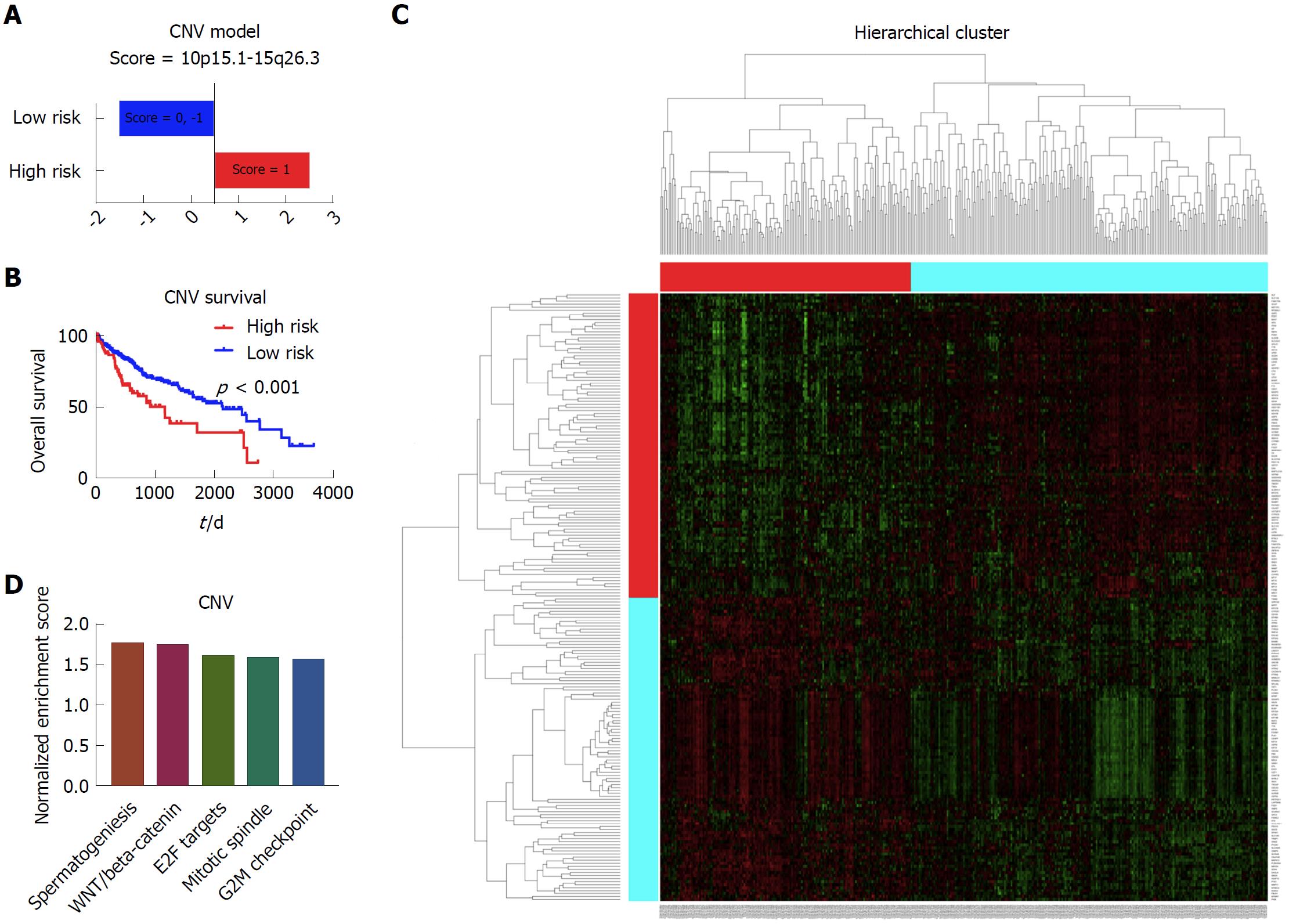Copyright
©The Author(s) 2018.
World J Gastroenterol. Jul 28, 2018; 24(28): 3145-3154
Published online Jul 28, 2018. doi: 10.3748/wjg.v24.i28.3145
Published online Jul 28, 2018. doi: 10.3748/wjg.v24.i28.3145
Figure 3 Establishment of prognostic model based on the copy number data.
A: The high risk group and low risk group based on the prognostic score. The patients with the score of 1 were considered as high risk, and patients with the score of 0 and -1 were considered as low risk; B: The Kaplan-Meier survival curves of the high risk group and low risk group, which showed that there was significant difference of survival between the high risk patients and low risk patients; C: The heatmap showing the different gene expression patterns of the high risk group and low risk group. It showed that the gene expression patterns of high risk group and low risk group were obviously distinct; D: The top enriched pathways in the high risk group, as indicated by gene set enrichment analysis. It showed that spermatogenesis, WNT/beta-catenin, E2F targets, mitotic spindle and G2M checkpoint were the top five enriched pathways in the high risk group patients.
- Citation: Song YZ, Li X, Li W, Wang Z, Li K, Xie FL, Zhang F. Integrated genomic analysis for prediction of survival for patients with liver cancer using The Cancer Genome Atlas. World J Gastroenterol 2018; 24(28): 3145-3154
- URL: https://www.wjgnet.com/1007-9327/full/v24/i28/3145.htm
- DOI: https://dx.doi.org/10.3748/wjg.v24.i28.3145









